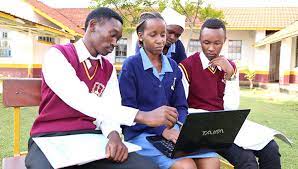KMTC Installs State-of-the-Art Qidenus Book Scanner
The Kenya Medical Training College (KMTC) is starting the new financial year with a revolutionary piece of technology that promises to transform teaching and learning at the College.
A state-of-the-art Qidenus Book Scanner has been installed in the library at the headquarters to help students access the latest books, past exam papers, teaching manuals, research projects, and more, all from the comfort of their hostels.
This machine will be integrated with the College website and e-library, enabling students to access these resources wherever they are.
“This cutting-edge technology will help digitize our unique historical materials, making them readily available,” said CEO Dr. Kelly Oluoch.
“The machine will allow us to scan, store, and share information and learning materials, making it easier for students to read books, revise past exam papers, and pass their exams with ease,” he added.
Dr. Oluoch revealed that the College is working closely with the Kenya National Library Service (KNLS) and other partners to secure all the required licenses.
The Qidenus Book Scanner is a semi-automated book scanner designed for large-scale book digitization that uses the Qi Capture software for image capture and processing.
It incorporates a variety of features, such as image capture for scanning or import, image processing and editing, easy insertion, rescanning, deletion, and reordering of scanned pages.
Recently, the College embarked on digitizing its library services to boost service delivery.
The machine, which scans at a speed of up to 1,500 pages per hour, is the second one in the country after KNLS.
It can scan large, flat media such as books, maps, posters, artwork, and photo prints. To scan a book or a larger document, simply lay it on the machine bed and use the touchscreen to create images.
For scanning multiple pages, the machine also has a document feeder. Once the images are captured, you can email them to yourself or save them to a hard drive, tablet, or smartphone.
